Idea by
Virginia De Jorge Huertas & Michele Di Maggio
DE JORGE DI MAGGIO
https://www.virginiadejorge.com/
Call for ideas 2020
Participative Process
Participative Process
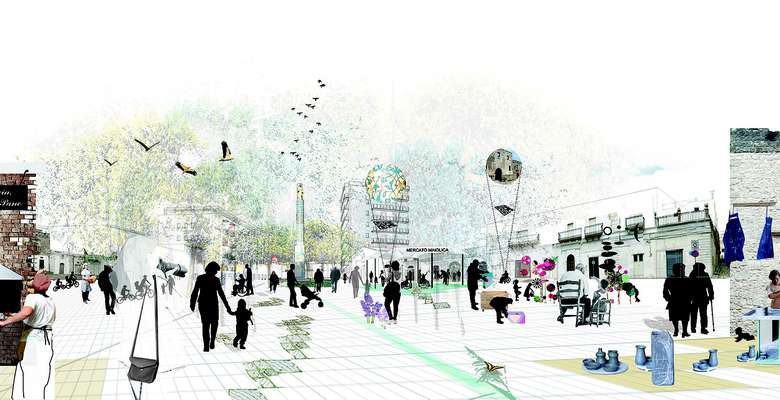
- New alliances
¿How can we project together public space? Participative Crono-tool is a productive strategy at various scales: it is a chrono-program of what we imagine could be the configuration of the square over time. ¿When? The “Biological Clock” can be collected in five points: A. description of production strategy, B. actors involved in the process/design, C. Location of strategies in the project area, D. strategy graphically explained in a specific site, E. possible time implementation (depending on B). Ex. we apply the “participative crono-tool” to one of our projects, “Laterza Lievita” (Shortlisted project in Europan 15 in Laterza, Italy). What we propose is a chrono-programme of tentative situations (or In-Situ-Actions) generated by the interaction among all the actors involved in the management and enjoyment of this public space: communities/temporary users/citizens, public administrations, investors, small and medium-sized craftspeople and local traders, owners of buildings and visitors.
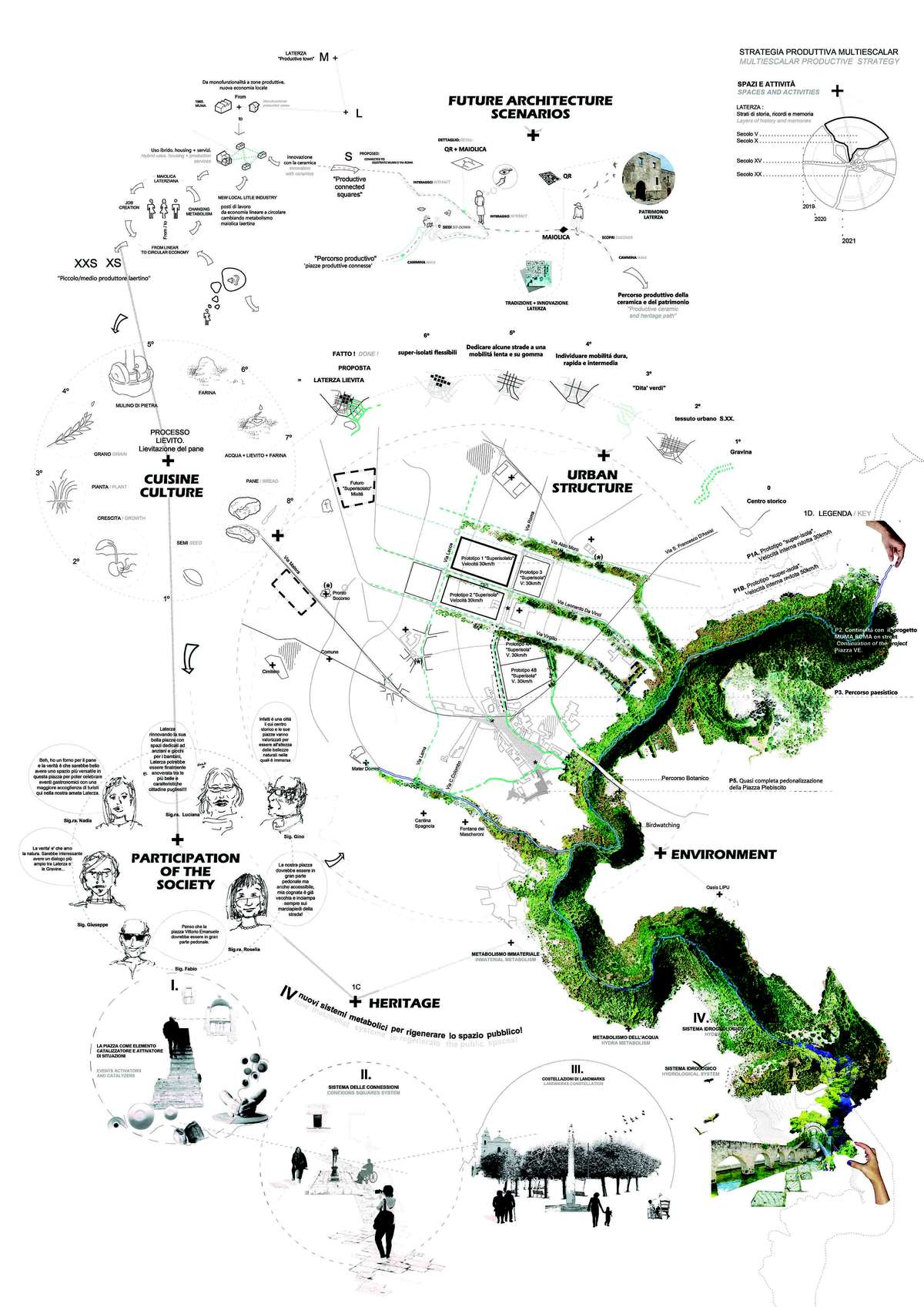
Metabolic diagram. ¿How can we project together public space?
Future Architecture Scenarios + Cuisine Culture + Urban Structure + Participation of the Society + Heritage + Environment.
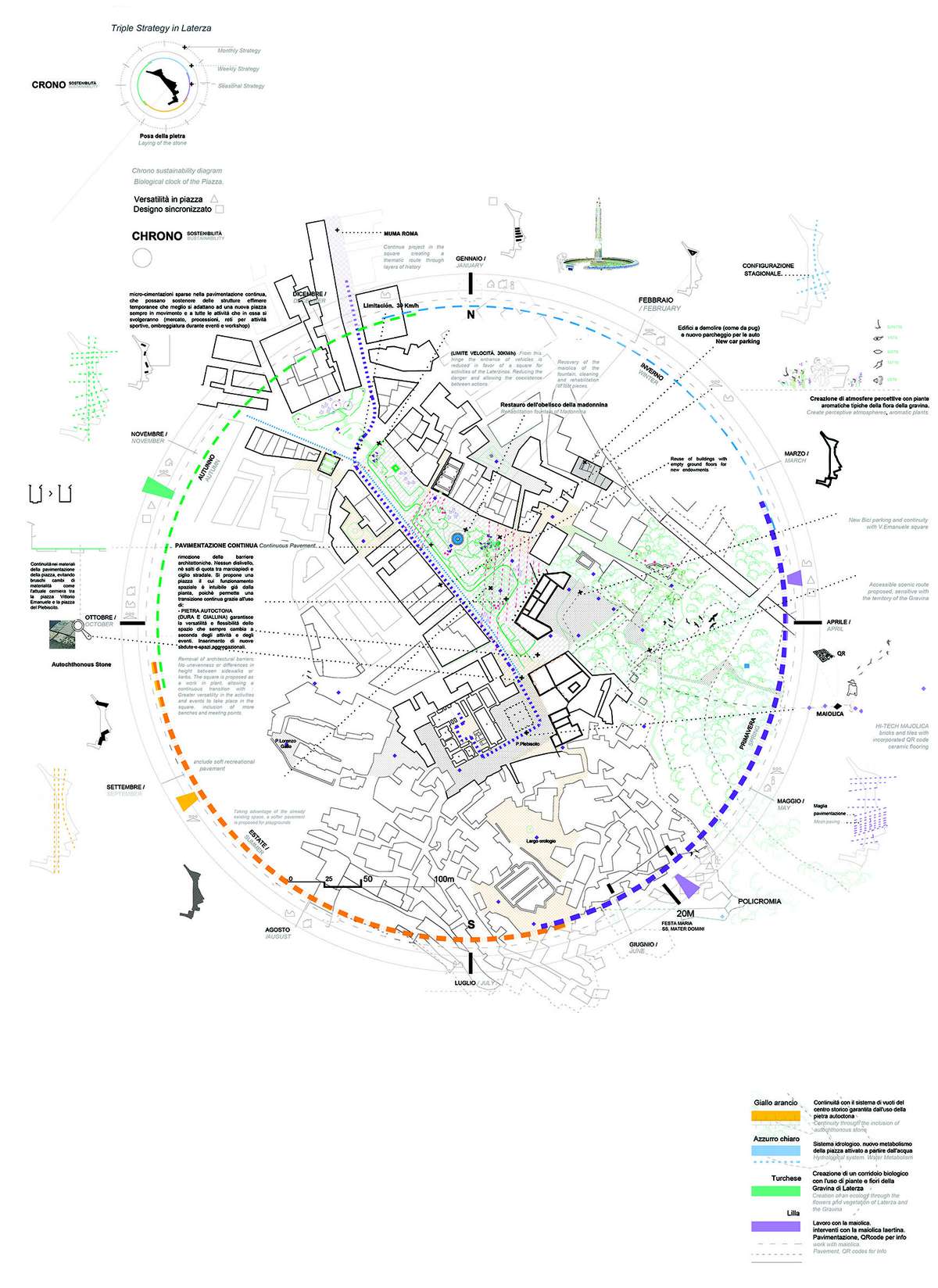
Participative Crono-tool. ¿When can we project together public space?

Axonometric view of Piazza Vittorio Emanuele. Application of the participative crono-tool
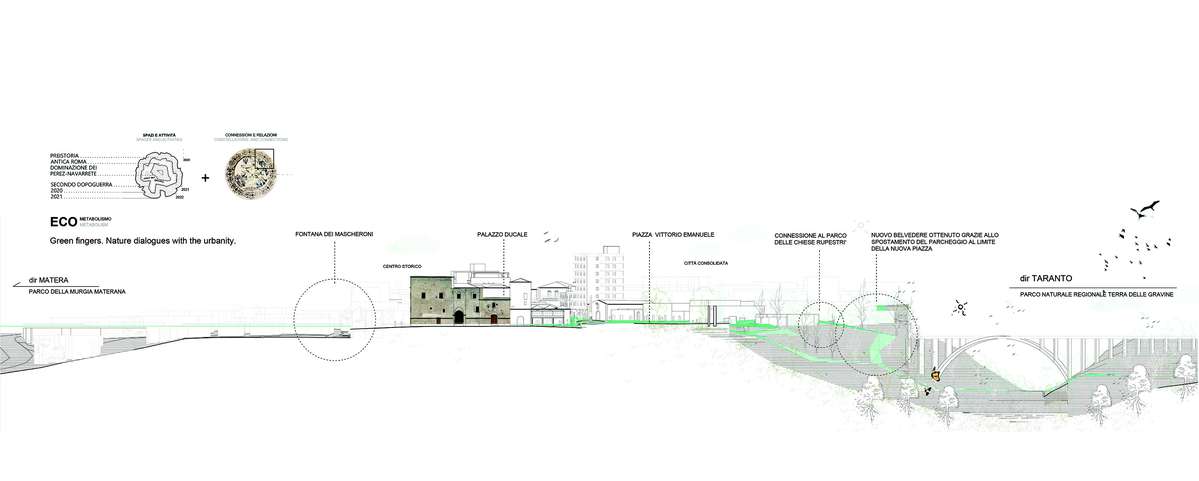
"Laterza Lievita" Longitudinal section. ¿Where can we project together public space?
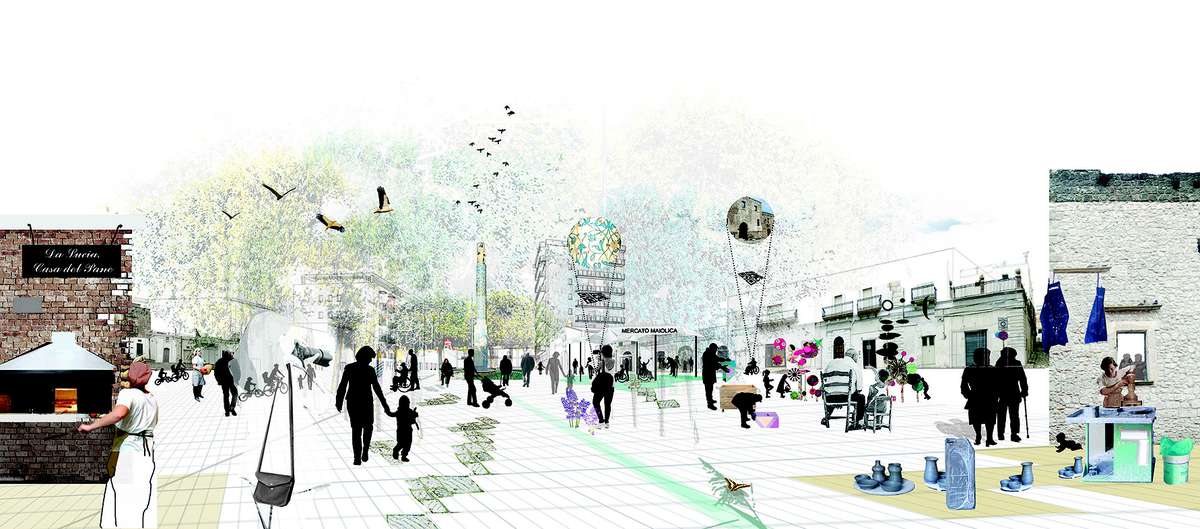
Scenography. ¿Who can play the scene? ¿Which scenographies can be created in public space?
Participative Process
Participative Process

- New alliances
¿How can we project together public space? Participative Crono-tool is a productive strategy at various scales: it is a chrono-program of what we imagine could be the configuration of the square over time. ¿When? The “Biological Clock” can be collected in five points: A. description of production strategy, B. actors involved in the process/design, C. Location of strategies in the project area, D. strategy graphically explained in a specific site, E. possible time implementation (depending on B). Ex. we apply the “participative crono-tool” to one of our projects, “Laterza Lievita” (Shortlisted project in Europan 15 in Laterza, Italy). What we propose is a chrono-programme of tentative situations (or In-Situ-Actions) generated by the interaction among all the actors involved in the management and enjoyment of this public space: communities/temporary users/citizens, public administrations, investors, small and medium-sized craftspeople and local traders, owners of buildings and visitors.

Metabolic diagram. ¿How can we project together public space?
Future Architecture Scenarios + Cuisine Culture + Urban Structure + Participation of the Society + Heritage + Environment.
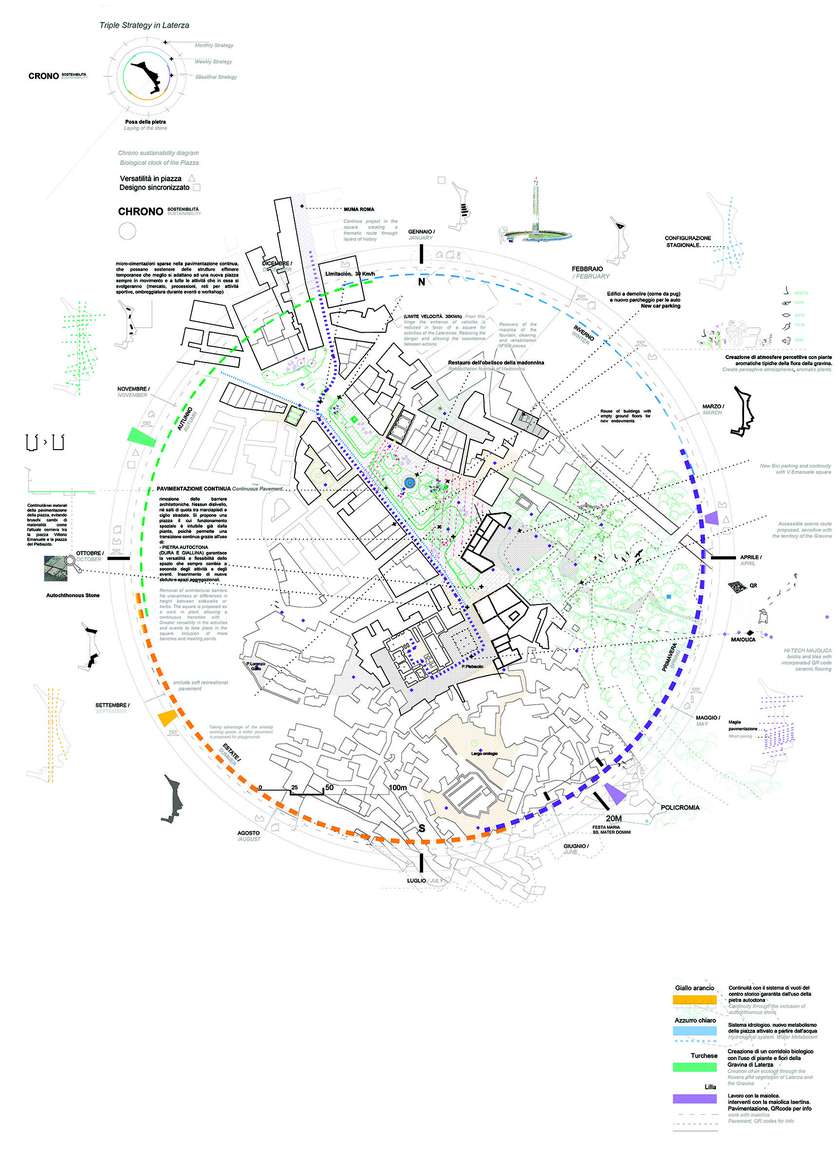
Participative Crono-tool. ¿When can we project together public space?
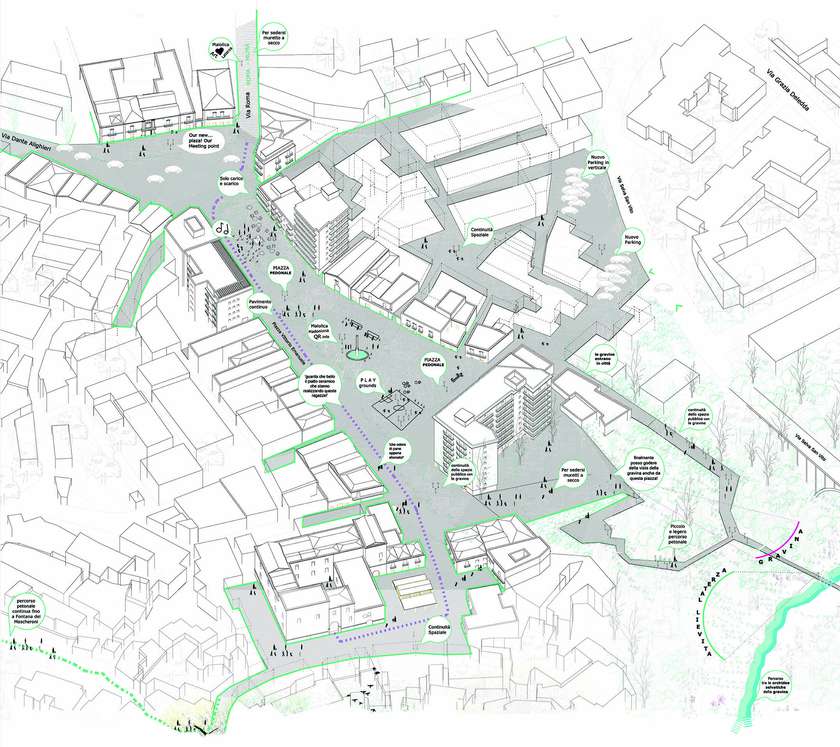
Axonometric view of Piazza Vittorio Emanuele. Application of the participative crono-tool
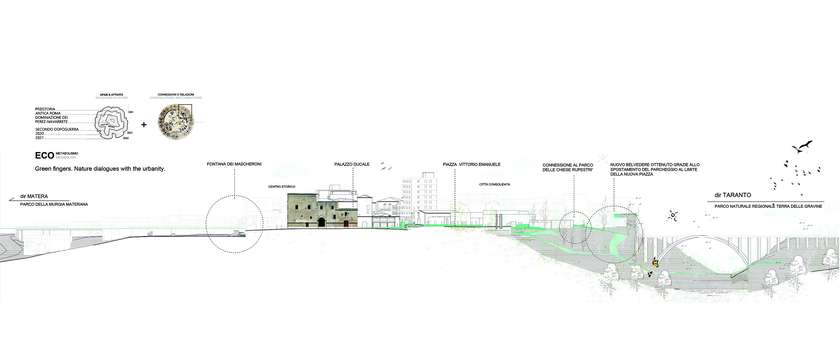
"Laterza Lievita" Longitudinal section. ¿Where can we project together public space?

Scenography. ¿Who can play the scene? ¿Which scenographies can be created in public space?